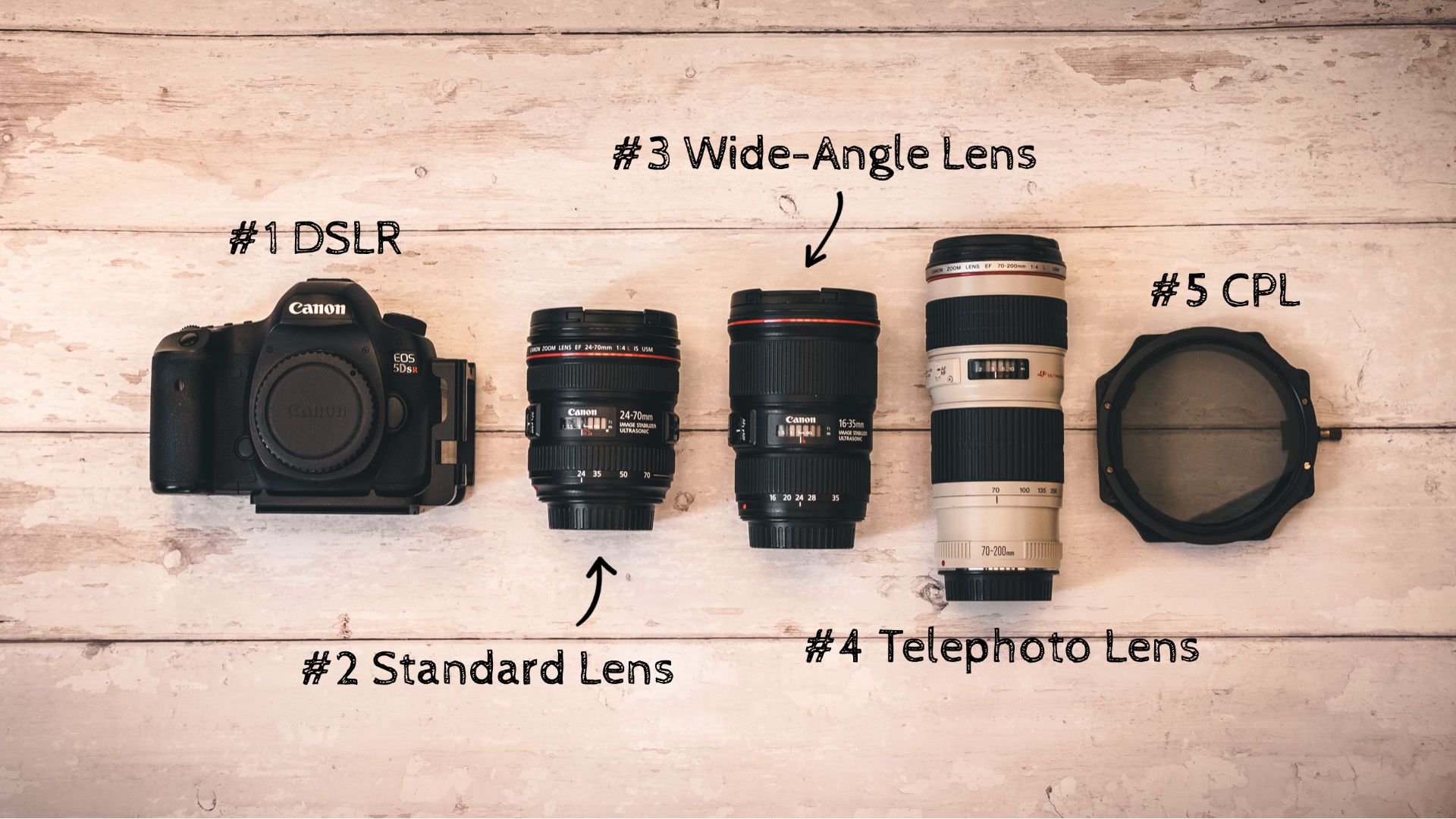My Gear for Landscape Photography
Aug 15, 2023
It may come as a surprise to you, but as a professional landscape photographer, I am not all that interested in gear.
I learnt long ago that the camera you use has very little impact on the quality of your photos. In my opinion, a lot of photography enthusiasts worry too much about gear and not enough about the things that actually make a difference.
As Ansel Adams once said, "There is nothing worse than a sharp image of a fuzzy concept."
For me, photography equipment is a necessary evil. But I have to use something, so this is what I use...
#1: Camera (Canon EOS 5DS R)
Purchased at the start of 2023, the 5DS R is my most recent acquisition. Before that, I'd spent 7 years using my beloved 6D, now relegated to the status of 'back-up body'.
The reason for my upgrade? Megapixels. The 5DS R has 50 compared with the 6D's 20, allowing me to produce bigger prints. An indication of where I see my future.
It was Marcus McAdam from Photography Online that recommended the 5DS R. In his opinion, it's still the best camera for landscape photography that Canon has ever produced. And that's good enough for me!
#2: Standard Lens (Canon EF 24-70mm f/4L IS USM)
For years, this was my go to lens. For general use, it is hard to beat, combining a versatile focal range with excellent image quality at an affordable price. If I had to pick just one lens to use for the rest of my life, it would be this one.
However, as my style has evolved, I've found I tend to favour shorter focal lengths that allow me to get closer to my subject and use perspective to create the illusion of depth.
#3: Wide-Angle Lens (Canon EF 16-35mm f/4L IS USM)
It took me 18 months to get the hang of using my wide-angle lens, but it was worth it!
When combined with the 5DS R, it is capable of producing exceptional quality prints. You would have to spend an awful lot more money to produce photographs that are noticeably sharper at this focal range.
#4: Telephoto Lens (Canon EF 70-200mm f/4L USM)
I have to be honest, my telephoto lens doesn't get much use. Just 5% of the photos in my portfolio where captured using my 70-200mm.
On the rare occasions it does come out of the bag, I use it to pick out details in the landscape. Truth be told, this is an area that I need to work on.
#5: Circular Polariser (LEE Filters Landscape Polariser)
These days, I find myself using filters less and less. Most of the time, I like to work with side-light which makes capturing the full tonal range much easier, so I don't have much use for ND grads.
The one filter I couldn't do without is the circular polariser which is essential for controlling glare from reflective surfaces such as rocks and foliage. I use a 105mm LEE Filters Landscape Polariser, which has a warm tint that helps boost the colours that occur naturally in the landscape.
Tripod (Not Shown)
At the moment, I use a Benro Mach 3 TMA48CXL, a carbon fibre tripod that extends well above my head height. This I have paired with a Benro GD3WH geared head.
Switching from a ball head to a geared head is one of the only times a piece of equipment has had an impact on my photography. The ability to make fine tuned adjustments has improved my compositions considerably.
Recommendations
If you are thinking of investing in your equipment for landscape photography, here are my top three tips:
#1: Invest in a decent standard lens. To begin with, a standard lens is all you will need. Invest in the best one your budget will allow, bearing in mind that for manufacturers such as Canon and Nikon, their best quality lenses are typically designed for their full-frame cameras.
#2: Get a sturdy tripod. Don't be fooled by recent advancements in image stabilisation, a tripod is still essential for landscape photography! They allow you to take the time to fine tune your composition and wait for the perfect moment to fire the shutter.
#3: Avoid cheap filters. There's little point investing in a high quality lens if you are going to put cheap filters on the front. It is worth while budgeting for a decent circular polariser. Look after it and there is no reason you'll ever need to replace it.
